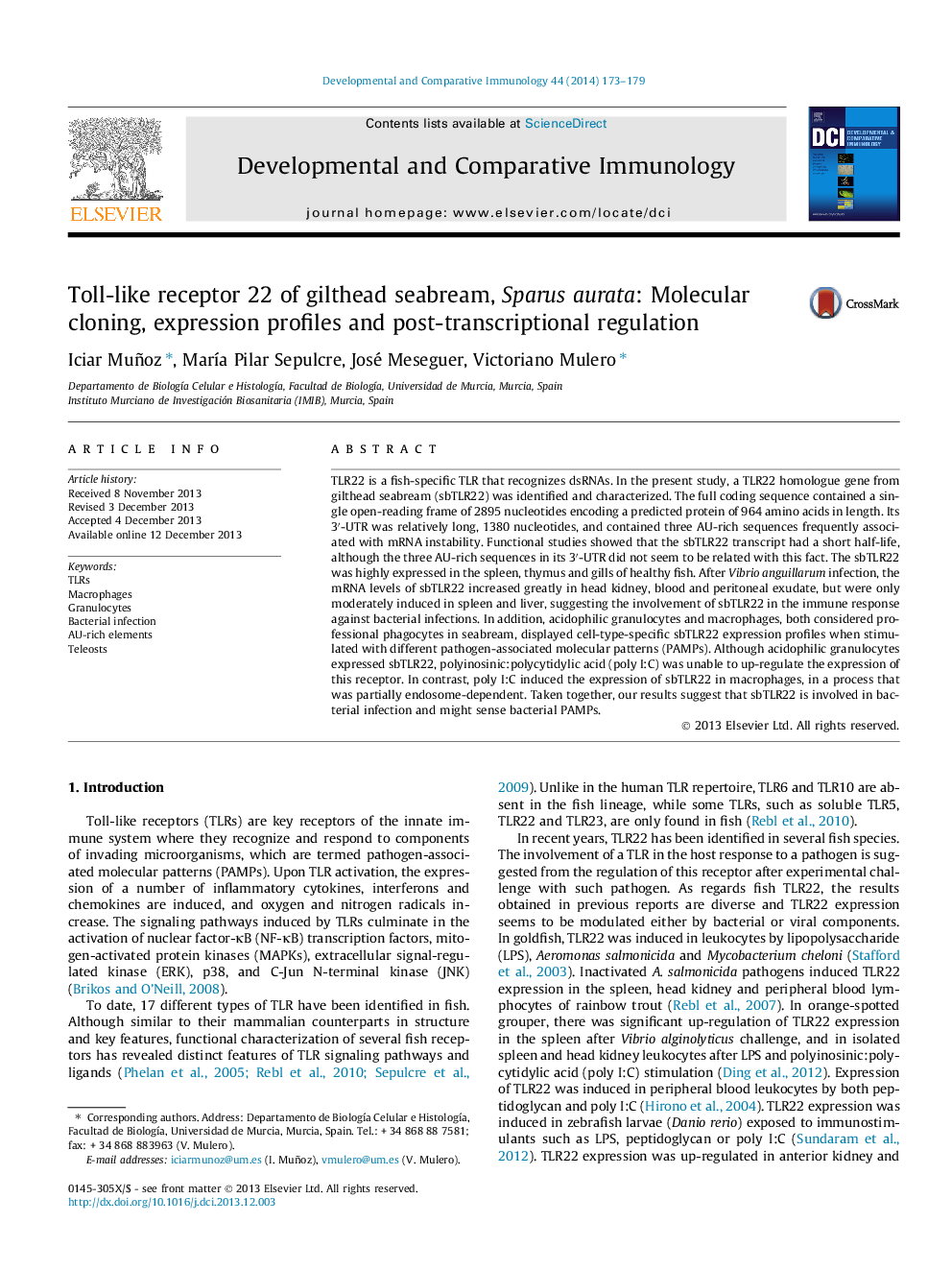| Article ID | Journal | Published Year | Pages | File Type |
|---|---|---|---|---|
| 2429261 | Developmental & Comparative Immunology | 2014 | 7 Pages |
•Gilthead seabream TLR22 (sbTLR22) has been identified.•sbTLR22 mRNA has a short half-life but the 3′-UTR does not regulate its stability.•sbTLR22 is highly induced following bacterial infection.•sbTLR22 is induced in granulocytes and macrophages upon PAMP stimulation.•Granulocytes fail to respond to poly I:C, despite they express sbTLR22.
TLR22 is a fish-specific TLR that recognizes dsRNAs. In the present study, a TLR22 homologue gene from gilthead seabream (sbTLR22) was identified and characterized. The full coding sequence contained a single open-reading frame of 2895 nucleotides encoding a predicted protein of 964 amino acids in length. Its 3′-UTR was relatively long, 1380 nucleotides, and contained three AU-rich sequences frequently associated with mRNA instability. Functional studies showed that the sbTLR22 transcript had a short half-life, although the three AU-rich sequences in its 3′-UTR did not seem to be related with this fact. The sbTLR22 was highly expressed in the spleen, thymus and gills of healthy fish. After Vibrio anguillarum infection, the mRNA levels of sbTLR22 increased greatly in head kidney, blood and peritoneal exudate, but were only moderately induced in spleen and liver, suggesting the involvement of sbTLR22 in the immune response against bacterial infections. In addition, acidophilic granulocytes and macrophages, both considered professional phagocytes in seabream, displayed cell-type-specific sbTLR22 expression profiles when stimulated with different pathogen-associated molecular patterns (PAMPs). Although acidophilic granulocytes expressed sbTLR22, polyinosinic:polycytidylic acid (poly I:C) was unable to up-regulate the expression of this receptor. In contrast, poly I:C induced the expression of sbTLR22 in macrophages, in a process that was partially endosome-dependent. Taken together, our results suggest that sbTLR22 is involved in bacterial infection and might sense bacterial PAMPs.
